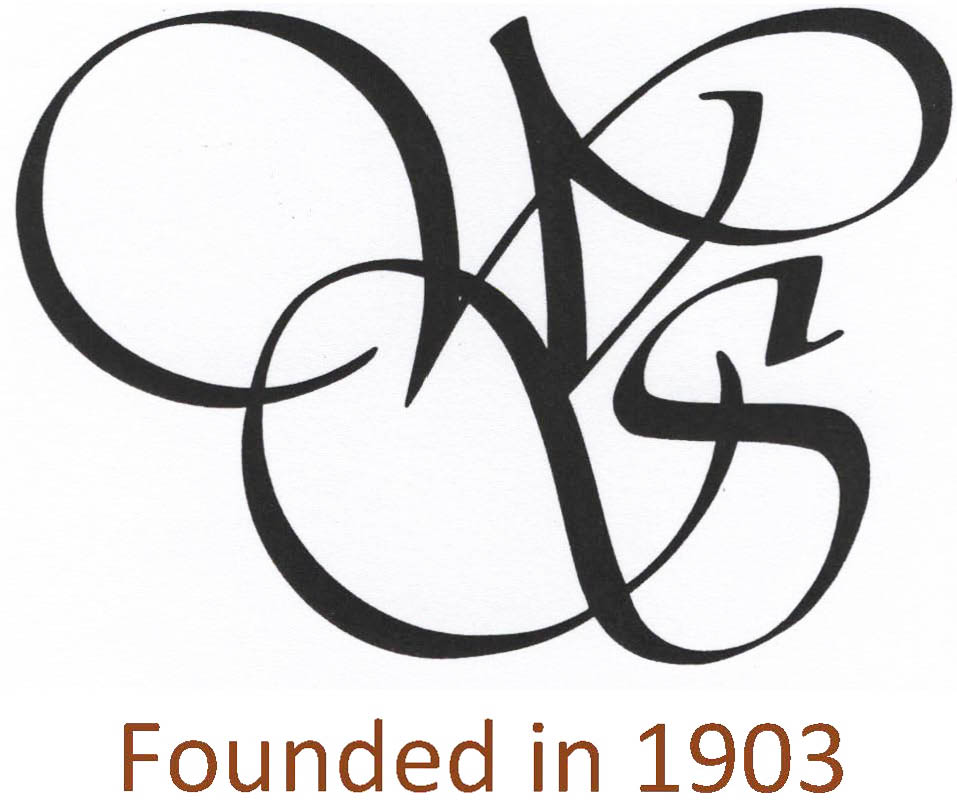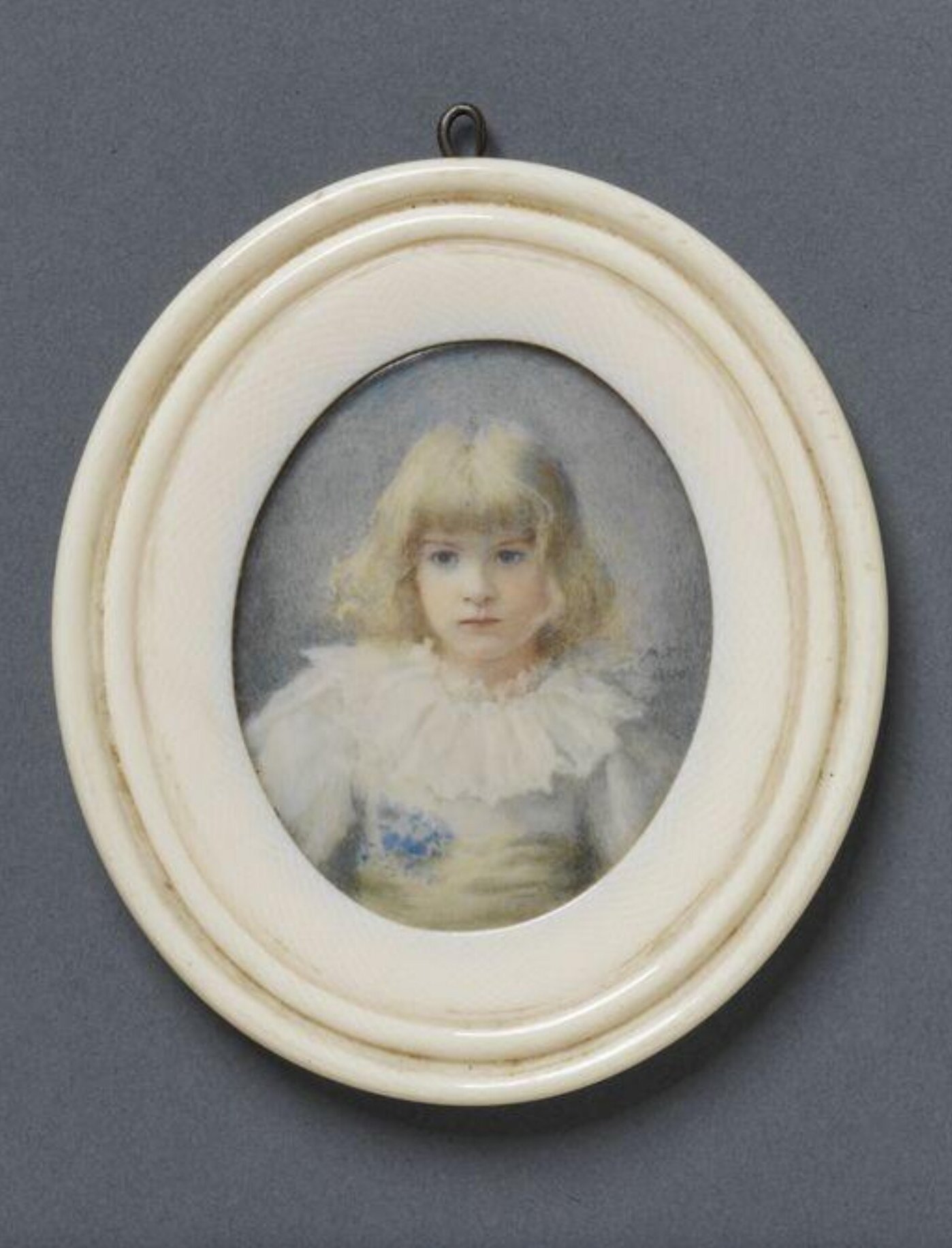Alexandrine and Katherine McEwan at their family ranch 7-Bar in Arizona (from the Smithsonian Archives of American Art) Bar 7 in Arizona
The sisters’ initial instruction in art was at the Detroit Art Academy, after which they attended the William Merritt Chase School in New York City, spending summers abroad with the Chase Art Class in Spain.
Alexandrine was a bookplate artist and painted miniatures. She also authored many of the early plays produced by the Detroit Society of Arts and Crafts.
Alexandrine McEwan, “iss Jean Elizabeth Adair,” aged about 8 (Victoria and Albert Museum: https://collections.vam.ac.uk/item/O82381/miss-jean-elizabeth-adair-aged-portrait-miniature-mcewan-alexandrine/)



